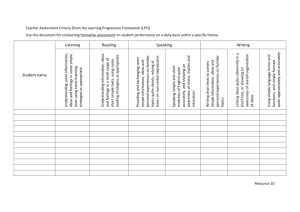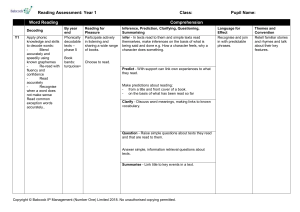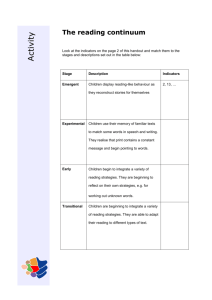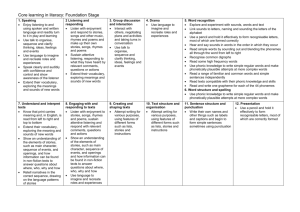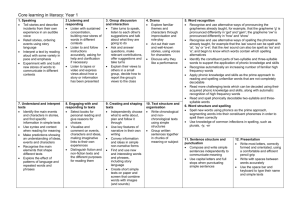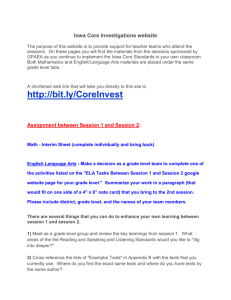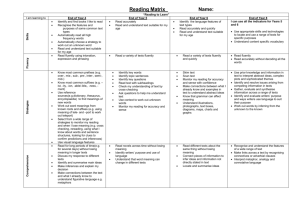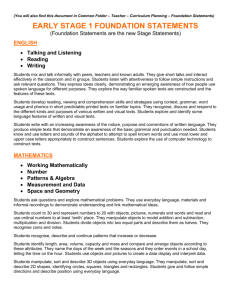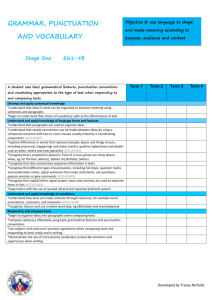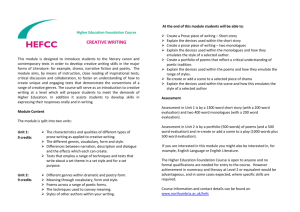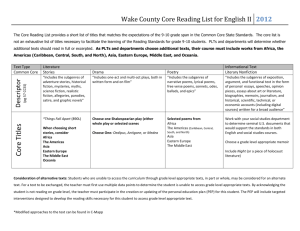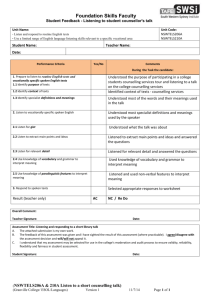Key Learning in Reading
advertisement
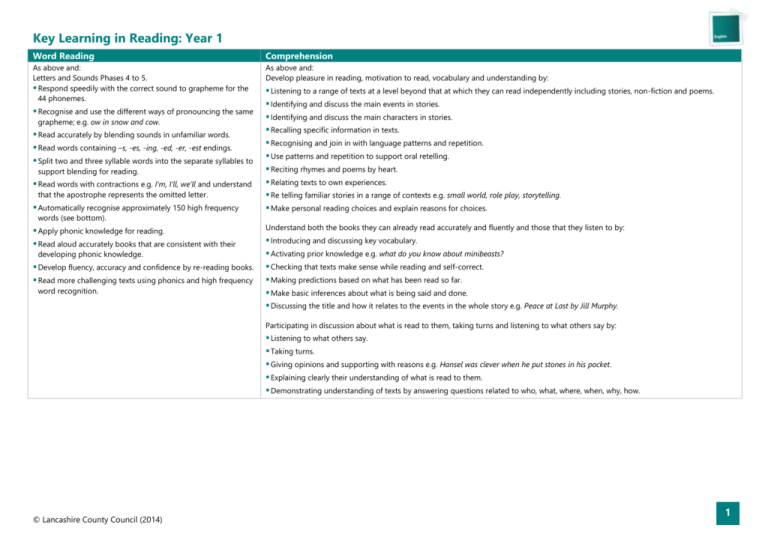
Key Learning in Reading: Year 1 Word Reading Comprehension As above and: Letters and Sounds Phases 4 to 5. Respond speedily with the correct sound to grapheme for the 44 phonemes. As above and: Develop pleasure in reading, motivation to read, vocabulary and understanding by: Recognise and use the different ways of pronouncing the same grapheme; e.g. ow in snow and cow. Read accurately by blending sounds in unfamiliar words. Read words containing –s, -es, -ing, -ed, -er, -est endings. Split two and three syllable words into the separate syllables to support blending for reading. Read words with contractions e.g. I’m, I’ll, we’ll and understand that the apostrophe represents the omitted letter. Automatically recognise approximately 150 high frequency words (see bottom). Apply phonic knowledge for reading. Read aloud accurately books that are consistent with their developing phonic knowledge. Develop fluency, accuracy and confidence by re-reading books. Read more challenging texts using phonics and high frequency word recognition. Listening to a range of texts at a level beyond that at which they can read independently including stories, non-fiction and poems. Identifying and discuss the main events in stories. Identifying and discuss the main characters in stories. Recalling specific information in texts. Recognising and join in with language patterns and repetition. Use patterns and repetition to support oral retelling. Reciting rhymes and poems by heart. Relating texts to own experiences. Re telling familiar stories in a range of contexts e.g. small world, role play, storytelling. Make personal reading choices and explain reasons for choices. Understand both the books they can already read accurately and fluently and those that they listen to by: Introducing and discussing key vocabulary. Activating prior knowledge e.g. what do you know about minibeasts? Checking that texts make sense while reading and self-correct. Making predictions based on what has been read so far. Make basic inferences about what is being said and done. Discussing the title and how it relates to the events in the whole story e.g. Peace at Last by Jill Murphy. Participating in discussion about what is read to them, taking turns and listening to what others say by: Listening to what others say. Taking turns. Giving opinions and supporting with reasons e.g. Hansel was clever when he put stones in his pocket. Explaining clearly their understanding of what is read to them. Demonstrating understanding of texts by answering questions related to who, what, where, when, why, how. © Lancashire County Council (2014) 1
